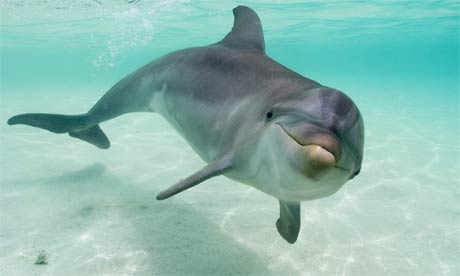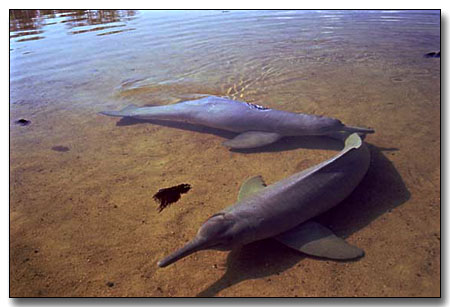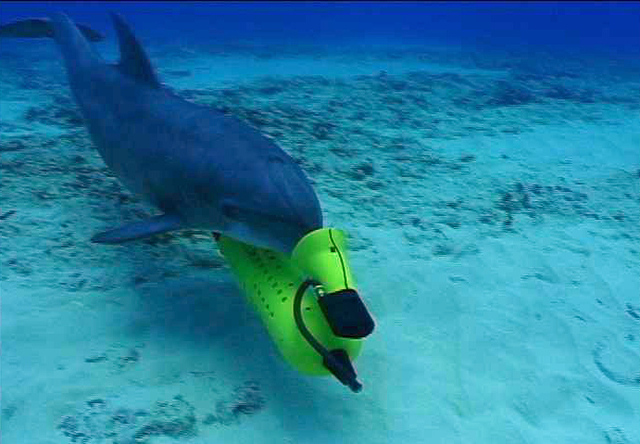 Bottlenose Dolphin
Bottlenose DolphinBecause there are nearly forty different species of dolphins, the size and weight vary greatly. The bottlenose dolphin is around 8 feet long and weighs between 440-660 lbs. The smallest of the dolphin species, Maui's Dolphin, is around 4 feet long and weighs around 90 lbs. The largest dolphin species is the orca, or killer whale. Male orcas grow to about 25 feet in length and weigh about 19,000 pounds.
 Maui's Dolphin
Maui's Dolphin  Orca
OrcaMost species of dolphins live in shallow tropical and temperate areas of the oceans throughout the world. However, five species, the Boto - Amazon river that lives in the Orinoco River and the Amazon, the Indus and Ganges river dolphins, the Baiji - Chinese River Dolphin that lives in the Yangtze River, and the Franciscana or La Plata River Dolphin found from the Doce River, live in rivers.
 Amazon River Dolphin
Amazon River DolphinDolphins tend to consume a variety of prey including fish, squid and crustaceans. Also, it's difficult to estimate population numbers since there are many different species spanning a large geographic area.
 Dolphin Locations
Dolphin LocationsMating for dolphins occur all year, however, there can be a spike in spring and fall. Females tend to be pregnant between 9 and 17 months depending on the species. Once it's time to give birth, the female will separate herself from the group, going near the surface of the water. Usually, females give birth to only one calf being that twins are rare. Once the calf is born, the mother must quickly take it to the surface so it can take its first breath. The calf will nurse from its mother for 11 months to 2 year, and will stay with its mother until it's between 3 and 8 years old once its done nursing.
 Mother and Calf
Mother and CalfOnly certain species of Dolphin are endangered, including Hector's dolphins. Hector's dolphins are found only around New Zealand, where the population has fallen from 30,000 to around 7,000 since nylon fishing nets came into use in the 1970s.
 Hector's Dolphin Range
Hector's Dolphin RangeInteresting facts about dolphins include:
- To prevent drowning while sleeping only half of the dolphin’s brain goes to sleep while the other half remains awake so they can continue to breathe
- Like bats, dolphins use echolocation to navigate and hunt, bouncing high-pitched sounds off of objects, and listening for the echoes,
- Even though dolphins have 100 teeth, they don’t use them for eating, but they do use them to get the fish though and then they swallow them,
- The average lifespan for a dolphin in the wild is 17 years, however, some have been documented to live to the age of 50
- Dolphins are the Navy's secret weapon for clearing underwater mines. They're employed in conflict areas like the Middle East's Strait of Hormuz, a key passageway for the world's oil tankers that's often dotted with bombs, thanks to mounting U.S.-Iran tensions. The military trains dolphins much in the way it trains bomb-sniffing dogs, teaching them how to spot hard-to-detect explosives and then mark them for the Navy's divers to disarm.
 Mine Sniffing Dolphin
Mine Sniffing DolphinMajor issues facing this animal include nylon fishing nets that are killing them, marine debris (anything from a sandwich bag to a lost fishing net) can cause internal damage if a dolphin ingests it, toxins that are created from runoff and air pollution as well as ocean dumping, the tuna fishing industry, and whaling.
I chose the dolphin because I find dolphins to be incredibly intellegent animals and they're adorable.

- Victoria Mehlhaff -
No comments:
Post a Comment